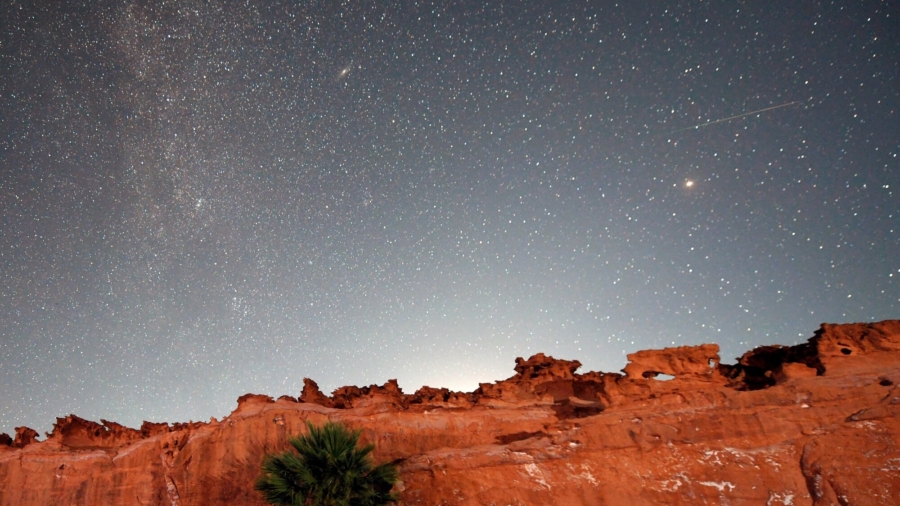The Draconid meteor shower is expected to peak on Friday, Oct. 8, and last through October 10, bringing with it a drizzle of meteors for dedicated stargazers.
The Draconids are notoriously “sleepy” showers, only producing five meteors per hour most years, according to EarthSky. This weekend’s shower is expected to be that sort of “slow show,” but American Meteor Society adviser Robert Lunsford said some years, the Draconids have produced thousands of meteors.
“Watching the Draconids will be seeing a bit of history because this meteor shower has produced historic events in the past,” Lunsford said.
The Draconids are optimal for early birds, because unlike other showers that peak after midnight, this one becomes visible at nightfall, as soon as the sky turns dark. This will also be one of the last meteor displays before colder weather comes in late October and November.
Don’t bother using a telescope, because it would limit your view of the sky. The naked eye is the best instrument to track these shooting stars. The meteor shower will be sporadic, so grab a lawn chair and plan on sitting outside for a while.
For the best view, try to find a spot without as much light pollution. The waxing crescent moon, just a sliver in the sky, won’t obscure the meteor shower this year. Getting to a higher elevation and facing north can help increase visibility as well.
Looking up at the sky on Friday, you may see more satellites than meteors (the latter travel much faster), but Lunsford said it’s the perfect opportunity to practice identifying constellations.
The shower’s radiant point, where meteors appear to emerge, is at the head of the constellation Draco the Dragon, which the shower is named after. But meteors can show up anywhere in the sky. People in the northern hemisphere will have a better view of this meteor shower.
The dragon isn’t always sleepy. Draconids are classified as variable showers, Lunsford said. While other showers are consistent from year to year, variable showers can produce thousands of meteors one year or only a handful the next.
In 1933 and 1946, the Draconid meteor shower produced thousands of meteors per hour, and in 2018, the comet came the closest it has to Earth in 72 years, according to EarthSky.
Fans of the Draconid shower might have more luck spying meteors in 2025. That’s when Comet 21P/Giacobini-Zinner, which produces this meteor shower, passes closer to Earth, according to EarthSky. The comet circles the sun every 6.6 years, and debris from this comet creates the Draconid meteor shower.
Meteor Showers to Look Forward To
If the Draconid shower is too sleepy for you, there are other meteor showers you can catch during the remainder of 2021, according to EarthSky’s 2021 meteor shower guide:
-
- October 21: Orionids
- November 4–5: South Taurids
- November 11–12: North Taurids
- November 17: Leonids
- December 13–14: Geminids
- December 22: Ursids
The Orionid meteor shower, which produces faster showers, will peak the morning of Oct. 21. But because the moon will be close to full, visibility may not be as clear.
The Taurid shower, which is known for appearing as bright fireballs, will peak early to mid-November. The best time to view the Taurids is after midnight.


